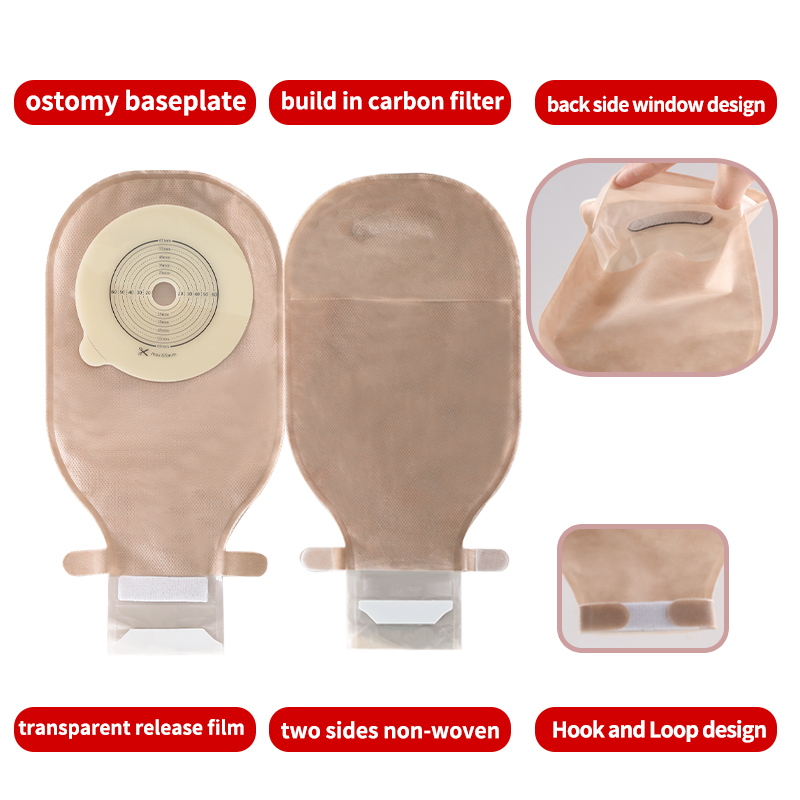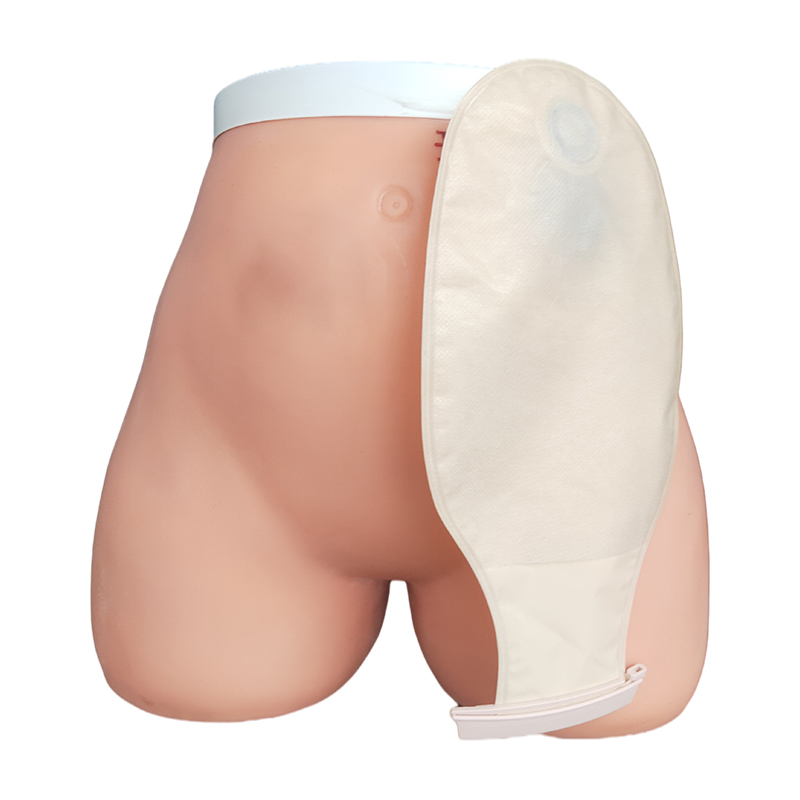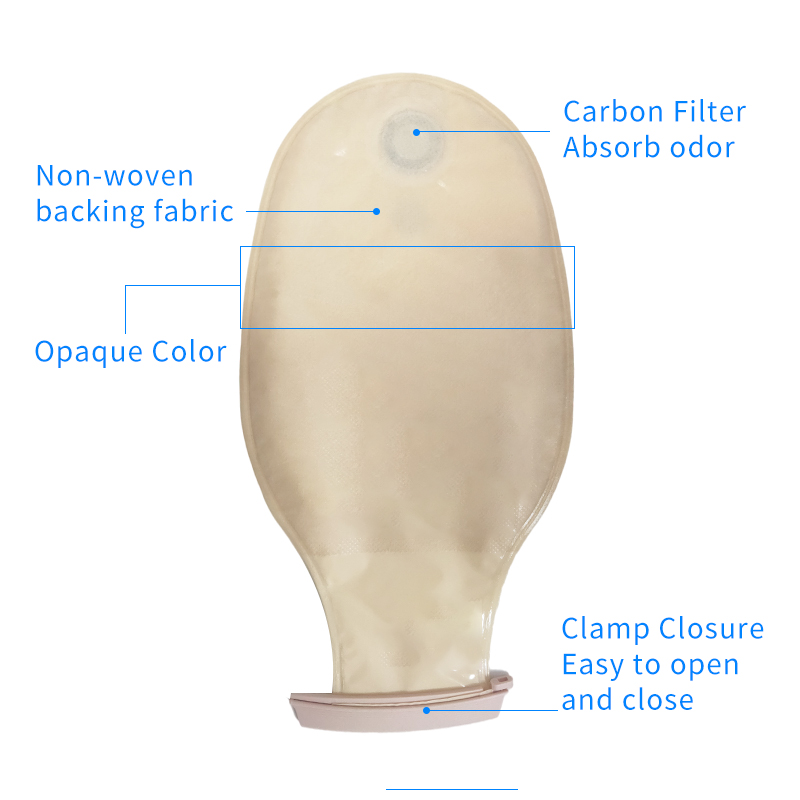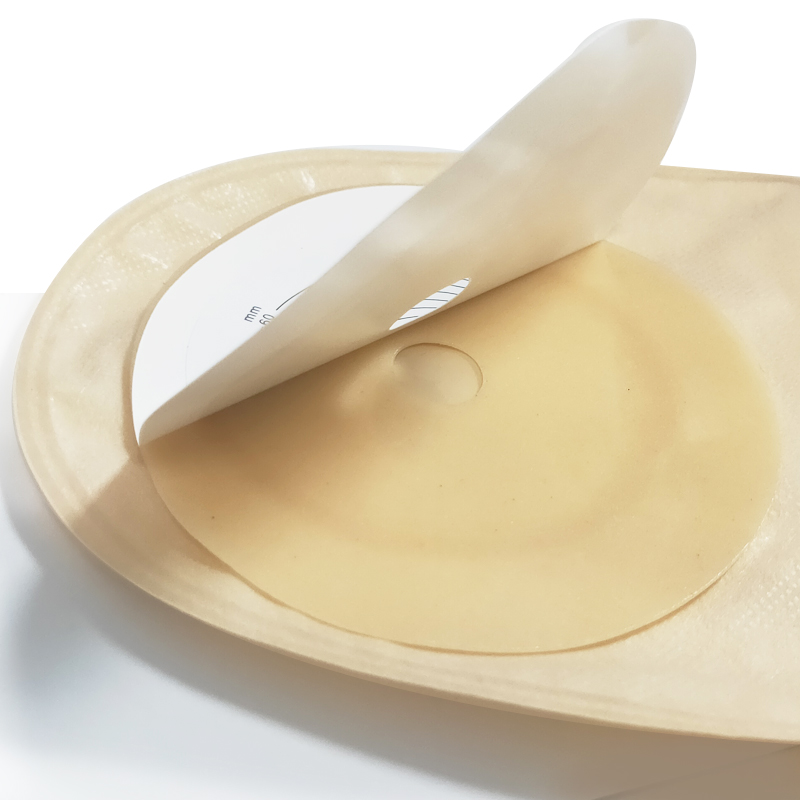What is an ostomy?
An ostomy is a surgery that makes a temporary or permanent opening in the skin called a stoma. A stoma is a pathway from an internal organ to the outside of your abdomen. A colostomy starts in the large intestine, and an ileostomy starts in the small intestine. They both help solid waste and gas exit the body without passing through the rectum. A urostomy helps urine leave the body without passing through the bladder. In all ostomies, the waste is usually collected in a pouch worn on the outside of your body.

Most people who need a cancer-related colostomy or ileostomy only need it for a few months while the small or large intestine heals. But some people may need a permanent ostomy. A urostomy is typically a permanent surgery and cannot be reversed.
What is a stoma?
The opening created by ostomy surgery. It is located on the abdominal wall and is dark pink in color. For most ostomies, a pouch is worn over the stoma to collect stool or urine.

What is an Ostomy Bag?
After an ostomy, you will need an ostomy bag to collect the waste that’s expelled from your digestive or urinary system. This connects to your stoma so that it’s directly emptied without any added effort. Ostomy bags are worn outside the body, but are easily concealed underneath clothes. If you’ve had an ostomy, wearing an ostomy bag is important to avoid any leakage from urine, stool, or gas

Different Types of Ostomy Bags
At the most basic level, there are three primary stoma type of surgeries that require ostomy bags. Each type depends on the type of ostomy procedure performed. Once you have an idea of which bag you’ll need, you can choose one based on further specifications discussed below.
Colostomy
If you need to get an operation, a part of your large redirected out into a stoma, typically on the lower left side of your abdomen. More often than not, this results in consistently firm, formed stool output and will need to be replaced or emptied a few times every day. Sometimes, a temporary colostomy is done to help aid in healing after surgery or an injury, other times a colostomy is permanent.

Ileostomy
An ileostomy is done when your small intestine is redirected through a stoma, typically on the right side of your abdomen. This results in a need to discard output frequently, which will affect your preferences for types of bags.

Urostomy
A urostomy is done when your small intestines are redirected to divert urine from the ureters through the stoma.1 This is done when the bladder is removed or needs to be bypassed for healing. A urostomy creates a stoma that’s usually located on the right side of the abdomen.

Choosing the Right Ostomy Bag
Every person is different, which means that personal preferences for the types of ostomy bags will vary. Because of this, there are a number of different features and options for your ostomy bag. Choosing the right one will help you stay comfortable and maintain your lifestyle needs. Different ostomy bags work well for different activities, so if you live in active lifestyle it may be beneficial to get numerous types of ostomy bags to use in each corresponding setting.
The main distinction between the different options for ostomy bags, after determining which type you will need, is whether or not it is a one-piece or two-piece variation. One-piece ostomy bags include a skin barrier and a pouch while two-piece ostomy bags keep the pouch and skin barrier separate. Once you determine whether or not you’ll want a one-piece or a two-piece ostomy bag, you can look at other options.

One-Piece Ostomy Bags
A one-piece pouching system consists of a pouch (bag) that has a skin barrier attached. The digestive enzymes make the output from your stoma very corrosive, so protecting the skin around your stoma, or peristomal skin, is extremely important. The skin barrier is the adhesive portion of your pouching system that is immediately around your stoma. It protects your skin and holds your pouching system in place, so it’s important to choose the right skin barrier . One-piece pouching systems are good for people wanting a more discreet ostomy bag, but may lead to more discomfort and skin irritation than a two-piece bag. This is a good option if you’re active or play sports.
Two-Piece Ostomy Bags
Two-piece ostomy bags are generally considered more comfortable and tend to cause less irritation. The skin barrier can be kept in place for 2-4 days without needing to be changed out and the bag can be changed without removing the entire ostomy pouching system. Because the skin barrier and the pouch are separate, it’s easy to change out the bag quickly. Meanwhile less frequent skin barrier changes are gentler on the skin. It helps to protect sensitive skin.
Drainable Ostomy Bags
A drainable ostomy bag allows you to empty the contents of your pouch and then reuse it.
Close-End Ostomy Bags
Close-end ostomy bags are made for single use and need to be discarded afterwards. Once the pouch has been filled, the entire bag needs to be properly discarded to avoid leakage or infection.
Pre-Cut Ostomy Bags
A pre-cut ostomy bag has an opening that is pre-cut and not measured to your specific stoma.
Cut-to-Fit Ostomy Bags
A cut-to-fit ostomy bag is a safer option to avoid leakage. Since the skin barrier is specifically measured and cut to your stoma size and shape, you’ll avoid leaks and have a more comfortably fitting bag. This will also reduce external irritation.
Flat Ostomy Bags
Most ostomy bags are flat and have an adhesive backing to keep the ostomy bag in a fixed position. This creates a more discreet bag fitting since the bag is flush with your body.
Convex Ostomy Bags
Some people prefer convex bags, which tends to protrude out more. Convex ostomy bags help to accommodate flush stomas, creases, telescoping stomas, and better adapts to skin wrinkles, and surgical scars.
Pediatric Ostomy Bags
Pediatric ostomy bags are smaller and made for infants or children. However, they can also be used for adults who prefer the discreetness of a smaller pouch. If this is the case, they will need be emptied more frequently to avoid overflow.
Finding the perfect ostomy bag might take a little trial and error. Don’t expect to order something and have it work perfectly the first time around. You will need to test the product to make sure that it’s comfortable and works for your lifestyle. Prior to using your ostomy products on or around your ostomy, test it on a different part of your skin. This allows you to take notice if you have any signs of allergic reactions to avoid having one on your ostomy. Many manufacturers will provide samples if you ask, so don’t be afraid to do so. Talk to your doctor and your ostomy nurse about additional ostomy accessories and remember to be patient during this time.

Living with an Ostomy
Whether permanent or temporary, an ostomy will bring some changes to your life. However, ostomy products are designed to be as convenient as possible.
If you need help finding or ordering products, ask your health care team for help. For example, an ostomy nurse can explain the different types of ostomy pouches that are available and help you find the one that is right for you.
Clothing. You should be able to wear the same type of clothes you wore before the ostomy. Pouches are designed to blend in and fit close to the body. They also have an odor-barrier film that traps bad smell. The smell only releases when the ostomy pouch is being emptied.
Activities. You should be able to do the activities of your daily life. People with ostomies go to work, play sports, and engage in sexual activity. Reasonable activity will not hurt you or your stoma. Sweating may cause the tape that holds your pouch in place to loosen. If this happens, you might consider buying a specialized pouch for working out.
Bathing. You will need to keep the skin around the ostomy clean and dry. Avoid applying products that contain alcohol as they can cause dry skin. Do not use skin products made with oil. They will make it difficult for the pouch to stay attached. If you have hair on the skin surrounding the ostomy, you may need to keep it shaved so the pouch will stick. Talk with your health care team about any special bathing considerations for your ostomy.
Diet. With a colostomy or ileostomy, you will not be able to control when stool and gas move into the pouch. Amounts of stool and gas that go into the pouch will vary based on the type of ostomy and your diet.
Avoid foods that commonly cause gas. These include beans, cabbage, onions, and spicy foods. Some foods can cause cramping or may be difficult to pass through an ostomy if they are not chewed well. These include nuts, popcorn, and corn. Also, be aware of which foods may cause diarrhea or constipation. It is important that you stay hydrated, especially if you have an ileostomy, because stool is usually more watery.
Medications. Some medications that are taken by mouth may not be as effective in people with a colostomy or ileostomy. This is because the medications take longer to absorb. A liquid medication can be absorbed faster and may work better.
Be aware of the medications that can affect the frequency of your bowel movements. Some sedatives and pain medications can cause constipation. And some antibiotics and antacids may cause diarrhea.
Some medications may cause urinary stones or increase the amount of urine your body makes. These could cause issues for people with urostomies. Talk with your doctor about any medications you are taking.
BKA Medical- Professional Ostomy bag supplier
At BKA, we are highly experienced in manufacturing and distributing ostomy bag for the medical industry. After being in the ostomy care industry for a number of years, we can lean on our expertise to help clients find the perfect adhesive solution for them. Contact us today to see how we can help you.

